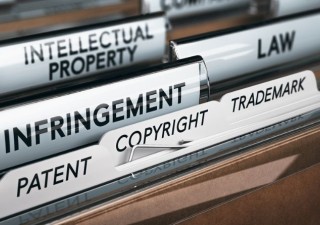India puts teeth into surrogate advertising laws
30 September 2022

India puts teeth into surrogate advertising laws
The laws on surrogate advertisements have mostly been silhouetted against the commercials featuring CDs, sodas and mouth fresheners and enforced by the self- regulating body called the Advertising Standards Council of India (ASCI). While ASCI’s code refers obliquely to surrogate advertising, there are statues that allow the brands to promote other products, under the same brand, which are not prohibited, thus, allowing surrogate advertising.
Over the period, government has made endeavors to disallow any form of surrogate advertisements with ‘general public doctrine’ in conscience. This article will briefly discuss the development of laws on surrogate advertisements, which lead to the framework of Guidelines for Prevention of Misleading Advertisements and Endorsements for Misleading Advertisements, 2022.
Legislative backdrop:
- Cigarettes and other Tobacco Products (Prohibition of Advertisement and Regulation of Trade and Commerce, Production, Supply and Distribution) Act, 2003: Section 5 prohibits those engaged in production, supply and distribution of cigarette/tobacco products and advertisers from advertising tobacco products directly or indirectly.
- Cable Television Network Rules, 1995:
- Rule 7 (viii) prohibits direct or indirect promotion, sale or consumption of cigarettes, tobacco products, wine, alcohol, liquor or other intoxicants. However, the first proviso permits the advertisements of brands of cigarettes, tobacco products, wine, alcohol, liquor or other intoxicants, provided no direct reference is made to the prohibited products and the storyboard and visual representation depicts other products.
- Vide an amendment dated June 17, 2021, sub rule 12 was added to the aforementioned Rule 7, thereby annexing conformity to ASCI guidelines.
- ASCI Guidelines:
- Chapter III has added safeguards against advertisements of prohibited products, yet again leniency has been granted for indirect (surrogate) advertisements, provided the said product is manufactured in a reasonable quantity, is necessary and has no direct allusion to prohibited products.
- Chapter VI has added qualifications for product/service brand extensions for brands engaged in the business of tobacco and liquor products. Under this chapter, liquor and tobacco brands can advertise its extension services/products, provided the qualifications are met with.
- World Health Organization Framework Convention on Tobacco Control 2005: With an intention to reduce tobacco consumption, signatories agreed to prohibit all forms of tobacco advertising, promotion and sponsorship that promote a tobacco product by any mean.
- The Surrogate Advertisements (Prohibition) Bill, 2016: With an intention to place a complete ban on all surrogate ads, this bill was tabled before the parliament. The bill was plain and did not cover multiple aspects associated with surrogate ads.
- The Consumer Protection Act, 2019defines ‘misleading advertisements’ and ‘unfair trade practices’, and these definitions are qualified enough to envelope the practice of surrogate advertisements.
- Advisory dated September 15, 2020, issued by the Ministry of Information & Broadcasting: In conformity with the ASCI code, this advisory allowed advertisement of products sharing brand name and logo of tobacco/liquor brands, thereby allowing advertisements of brand extensions.
Guidelines for Prevention of Misleading Advertisements and Endorsements for Misleading Advertisements, 2022 (the said guidelines):
- The Central Consumer Protection Authority formulated these detailed guidelines, which are in addition to the already existing laws as mentioned above to prevent misleading advertisements and unfair trade practices and notified it on June 9, 2022. For the purpose of this article, we are limiting ourselves to the guidelines on surrogate advertisements, albeit the guidelines cover multiple facets of misleading advertisements.
- These guidelines will be applicable to
- All advertisements, in any format.
- A manufacturer, service provider or trader whose goods, product or service is the subject of an advertisement, or
- To an advertising agency, or
- Endorser whose service is availed for the advertisement of such goods, product or service.
- Definition of Surrogate Advertisements (Section 2(h)): Any advertisement of goods and services, which is otherwise prohibited by law, circumvents such prohibitions, and advertises different goods and services, under the same brand, which are not prohibited. Please note that the definition does not use the term ‘under the same brand’, but for the understanding of our readers, this qualification has been added.
- The guidelines under Section 6(2) states following two qualifications for an advertisement to be surrogate:
- If any direct or indirect advertisement of goods and services which are prohibited/ restricted under law.
- If the advertisement uses brand name, logo, colour, layout and presentation associated with those goods/services which are prohibited/restricted.
- There is, however, an exception to surrogate advertisement, which has been mentioned under the proviso of the aforementioned section. The guidelines clarifies that the mere use of a brand name or company name, which is also used on the prohibited goods/services, will not amount to surrogate advertisement.
- The penalty for violation of these guidelines finds mention in Section 89 of the Consumer Protection Act, 2019, as per which a manufacturer or service provider who causes a false or misleading advertisement be punished with imprisonment (maximum two years) and with fine up to Rs1 million (US$12,130). For every subsequent offence, the manufacturer or service provider will be punished with imprisonment for a term which may extend to five years and with a fine which may extend to Rs5 million (US$60,600).
Conclusion
A bare reading of the said guidelines would reflect the intentions of the legislature, which is protecting interests of the consumers. Other than covering ‘surrogate advertisements’, the guidelines have framed rules on aspects of ‘bait advertisements’, ‘free claims advertisements’, and ‘children-targeted advertisements’ as well. Moreover, the guidelines provide that due diligence be conducted by the endorser, before endorsing any advertisement and further bars any professional from endorsing an advertisement pertaining to any profession.
Apropos surrogate ads, the guidelines have placed fencing around any loophole which allows any advertiser to promote a prohibited products/service, indirectly. It is pertinent to point out here that unlike the ASCI code, the concept of ‘brand extensions’ does not find mention in the said guidelines. This may be effective in curbing misleading ads but will certainly impact the genuine brand extensions. The moot point being that Section 10 of the guidelines does provide a little clarification on this issue, as it states that the guidelines are in not in abrogation to any other law in force, which may include the ASCI guidelines.








